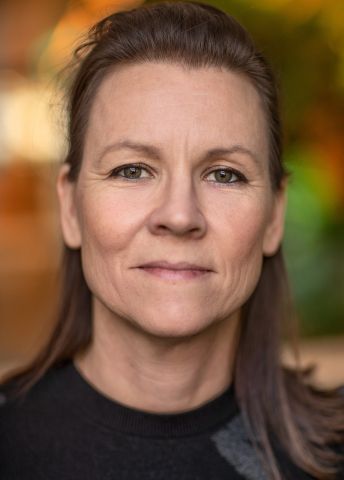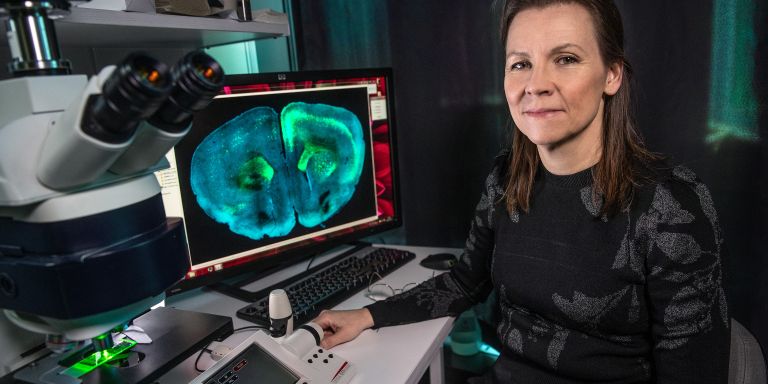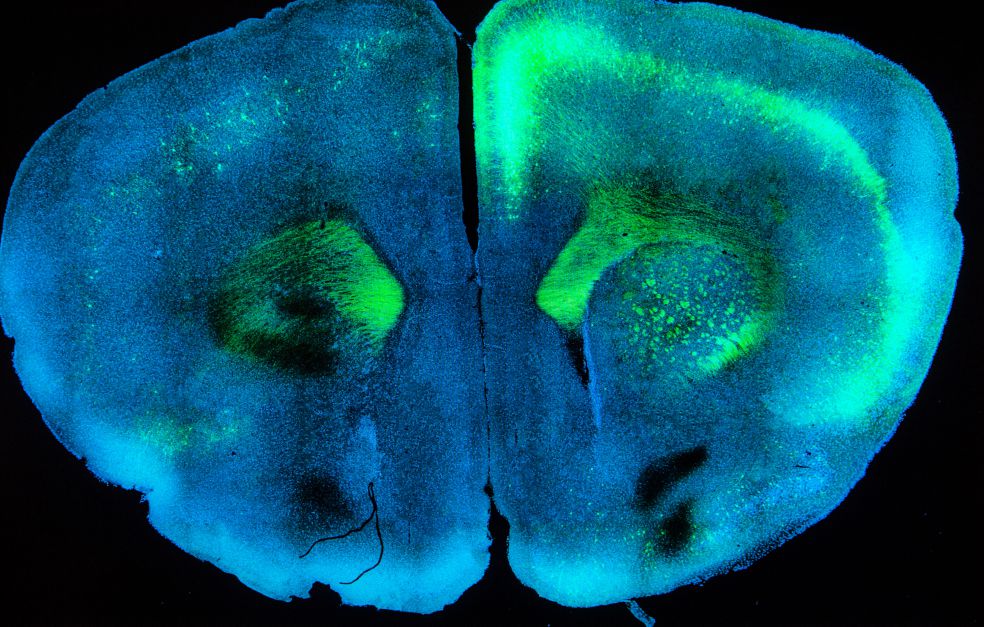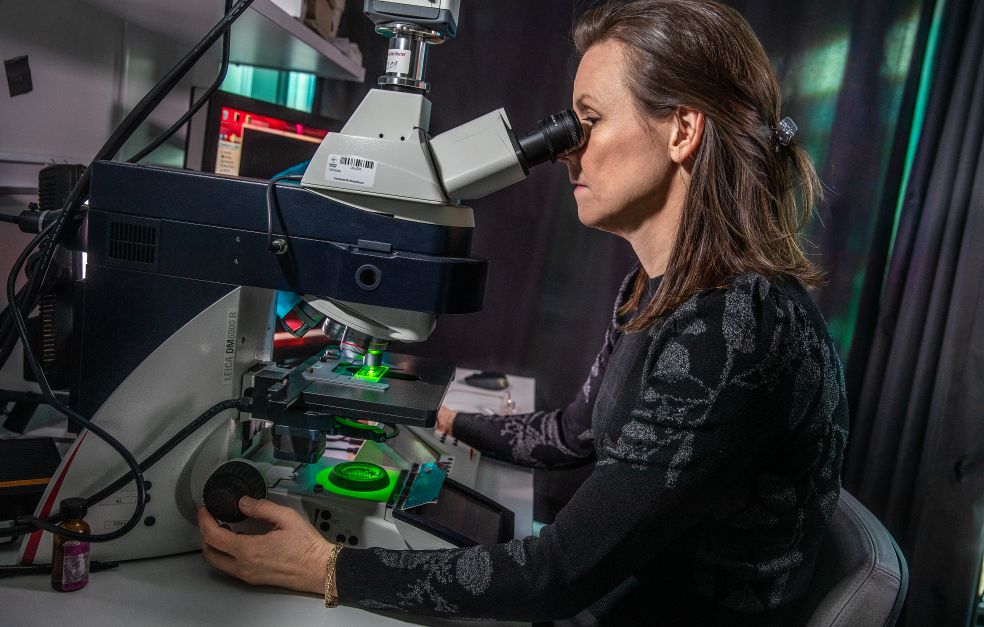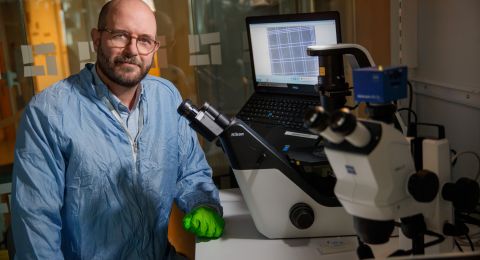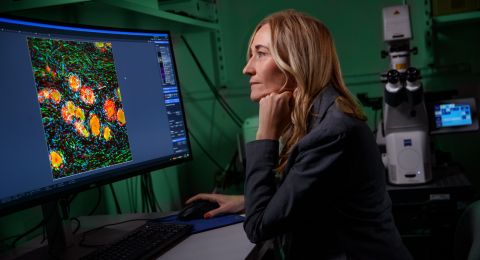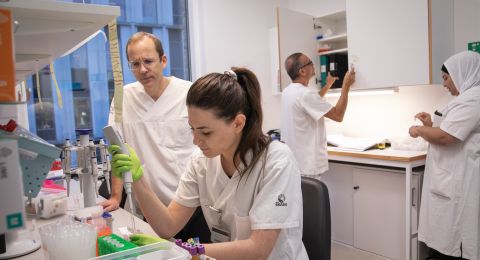Marie Carlén says that she became a brain researcher by chance. She studies the cellular underpinnings of cognition and the biology underlying impaired cognition and behavior in neuropsychiatric disorders.
Marie Carlén
Professor of Neuronal Networks
Wallenberg Scholar
Institution:
Karolinska Institutet
Research field:
Prefrontal cortex networks and activity to ascertain the biological basis of cognition
“I’m not interested specifically in the reasons for particular mental disorders. I want to find out what characterizes brain activity in people suffering from schizophrenia, for instance, and how this relates to impaired cognitive abilities, and atypical behaviors.”
Cognition is about how the brain takes in, processes and updates information. Our cognitive abilities enable us to plan and organize the things we have to do in the near and long term, evaluate results, solve problems and make decisions. These processes are often impaired in people suffering from mental illness.
Researchers still know very little about how the brain works, but our knowledge is growing all the time.
As a Wallenberg Academy Fellow, Carlén’s research focused on a specific type of neurons in the brain: parvalbumin (PV)-interneurons. She is using her Scholar grant to continue this line of research.
“I’ve been researching this cell type for over ten years. It’s very closely linked to cognition, including cognitive changes,” she explains.
EEG can be used to detect variations in electrical activity in the brain. It has long been known that brainwaves in people suffering from schizophrenia, for instance, have different patterns during cognitive processes.
“Since deviations can be measured, it should also be possible to ascertain the biological mechanisms. Much of my earlier research has centered on understanding how specific brainwaves are created. One of our major discoveries is to show how waves that are typical of cognitive processes occur biologically, and what types of nerve cells are involved.”
“I am so very proud to have been chosen as a Wallenberg Scholar. It’s the ultimate proof that our research in the lab is seen as having the potential to truly contribute new knowledge. The funding is of a uniquely long-term nature, and enables me to continue to pursue technically difficult and costly projects that offer high potential.”
Spotlight on the working memory
Her main goal in this project is to study the working memory – a key cognitive process. The working memory is a type of short-term memory by which we use information that is available only temporarily and for a short time as a guide to our behavior in different situations.
“It’s important to understand how information can be retained in the brain for short periods without being stored. There must be patterns of activity in the brain that make this possible. We use our working memory almost constantly, but it may be impaired in people with ADHD, autism or schizophrenia, for example.”
Working memory is being studied in mice that have been trained to perform behavioral tests. The mice are then studied using various techniques – optogenetics, for example.
“These are studies that cannot be performed on humans. I want to understand cellular fundamentals and mechanisms involved in the working memory, and how information processing in the prefrontal cortex contributes to working memory.”
And it is here that her interest in PV interneurons once again plays a part.
“We know that their activity generates specific brainwaves. Using EEG, we see how the brainwaves increase when the working memory is engaged. The question is whether and how they contribute to working memory.”
Although mice are not humans, Carlén believes the findings can to some extent be extrapolated.
“The cortex was the last part of the brain to evolve. There is much to indicate that many types of neurons are still common to different mammals. The cell types I am concerned with – the inhibitory types, such as PV interneurons – regulate the activities of other types of neurons. The interaction between inhibitory and excitatory cells seems to be an important biological principle governing the workings of the cortex. Inhibition plays a key role in determining which information is processed in the cortex, and how that information is passed on – or not – between regions of the brain. Genetic studies have time and time again indicated there is a link between changes in inhibitory neurons and neuropsychiatric disorders.”
She also points out that if we can understand how the different parts of a mammal brain work, we will also come closer to understanding the unique human brain.
“We need a model so we can make comparisons. At present we don’t know whether there is any point in developing drugs based on studies of mice, since we lack key fundamental knowledge about how the brain works, and we know even less about what distinguishes a human brain from that of a mouse.”
Exciting times
When she was studying for her biology degree, Carlén saw a future as a scientist. But she was happier in the laboratory than in the field, and when it was time to write her thesis, she secured a position in the lab run by Jonas Frisén, a brain researcher at Karolinska Institutet (KI). And she stayed on. This was what she wanted to do. She is probably fairly unique in her field in not having enrolled on a single university course in neuroscience.
“I learned about neuroscience as PhD student and during postdoc studies.”
She met her husband, Konstantinos Meletis, in the lab at KI. They have lived and worked together for over 18 years now.
“Some people wonder how we can stand it. But actually we hardly ever talk about research at home. On the other hand, it’s a huge advantage to have someone who totally understands that research is not a nine-to-five job.”
The couple were both recruited to KI after spending some years in the U.S. They were in process of setting up their respective labs while Marie was expecting twin girls – now aged 11.
“It was a hectic time. But it worked out because we shared the burden and were helped by our parents. This enabled us to attend the same conferences – neither of us had to miss out.”
Carlén considers she has experienced one of the most exciting periods in the history of neuroscience.
“So many strides have been made over the past ten years thanks to new technologies and methods. There is still much we don’t know about the brain, but the current rate of progress is unprecedented.”
Text Carina Dahlberg
Translation Maxwell Arding
Photo Magnus Bergström
